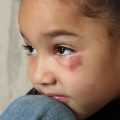What Is Child Safety?
Child safety is an important aspect of public health concerned with limiting children’s exposure to hazards and reducing children’s risk of harm. Childhood unintentional injury represents an important global health problem. Many unintentional injuries experienced by children aged under 5 years occur within the home and are preventable.
Children are particularly vulnerable to accidents, and their safety requires different approaches from those for adults. In the early 21st century, approximately one million children worldwide died each year from accidental injuries, with about 95 percent of those injury-related deaths taking place in low- and middle-income countries. In the United States and most other industrialized countries, unintentional injury was the number one cause of death among children.
Why do children have accidents?
Because children are often absorbed in their own immediate interests they can be oblivious to their surroundings. They only have a limited perception of the environment because of their lack of experience or development. They are not aware of the consequences of the many new situations that they encounter daily.
Small stature
This may prevent a child from seeing above an obstruction or being seen by an adult.
Inquisitiveness
Curiosity and a spirit of adventure may lead a child into danger.
Bravado and horseplay
Boys are particularly prone to showing off and over reaching their abilities, especially among friends. Many accidents are caused by horseplay involving pushing, shoving and wrestling.
Stress
Tensions at home and emotional upsets caused by temper, jealousy and over excitement may cause a child to run blindly into danger. Such action may even be deliberate to seek attention.
Inexperience
A child’s interpretation of a situation may be inaccurate and adults looking after small children should be aware not to expect too much of them.
Inadequate supervision
Children need constant supervision. Medicines, pills and toxic substances should be locked away and fires and stairs should be guarded. Also Read: Signs of Sexual Abuse In Children
How To Prevent Child Accidents
No one device or solution can prevent all types of accidental childhood injuries. Instead, child safety requires a multifaceted approach, which includes educating adults and children about risks, designing safe environments, conducting research, and advocating for effective laws. Education is one of the main pathways to improving child safety and requires the involvement of parents, caregivers, children, health care practitioners, policy makers, and other target groups in order to increase knowledge and change attitudes and behavior.
Examples of areas in which education about risks is crucial include the use of seatbelts in automobiles and helmets while bicycling and for other activities, the importance of not leaving young children unattended, and keeping plastic bags, choking hazards, and toxic materials out of the reach of children.
Safety and child development
Children differ in their rate of development but the information below is a guide to development stages:
| Age | Development | Advice |
| 0-6 months | Wriggle and kick, grasp, suck, roll over. | Do not leave on a raised surface. |
| 6mths-1 yr | Stand, sit, crawl, put things in mouth. | Keep small objects and dangerous substances out of reach |
| 1-2 years | Move about, reach things high up, and find hidden objects, walk, and climb. | Never leave alone, place hot drinks out of reach, use a fireguard and stairgates |
| 2-3 years | Be adventurous, climb higher, pull and twist things, watch and copy. Be a good role model and be watchful. | Place matches and lighters out of sight and reach. |
| 3-4 years | Use grown-up things, be helpful, understand instructions, be adventurous, explore, walk downstairs alone. | Continue to be a good role model, keep being watchful but start safety training. |
| 4-5 years | Play exciting games, can be independent, ride a bike, enjoy stories | They can actually plan to do things and carry it out. Rules are very important to them, as long as everybody keeps to the same ones. They enjoy learning. Continue safety training. |
| 5-8 years | Will be subject to peer pressure and will still forget things. | Still need supervision, guidance and support. |





